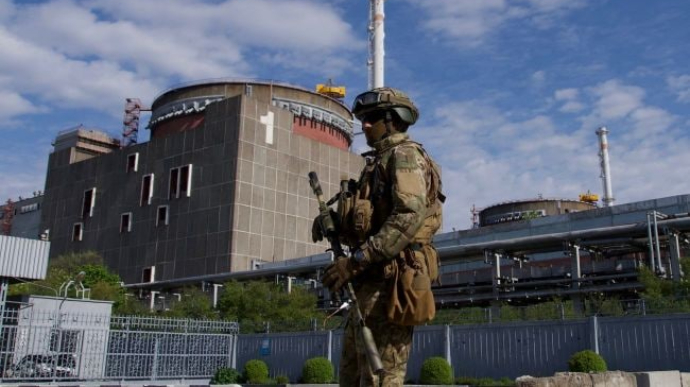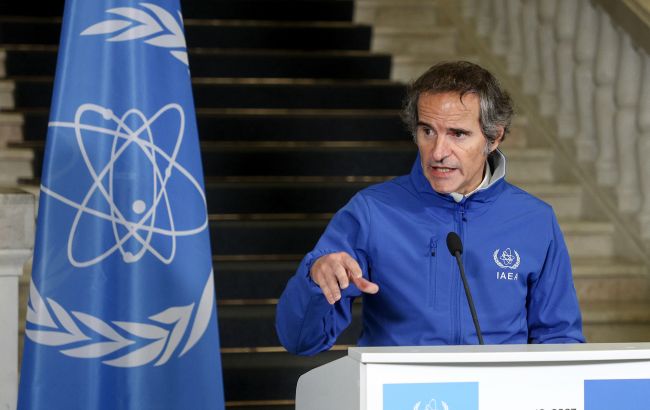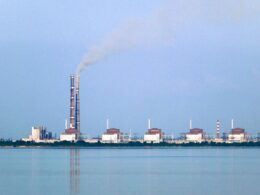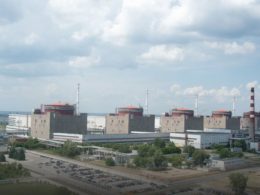In October 2022, the Ukrainian military attempted to regain control of the Zaporizhzhia Nuclear Power Plant from Russia, but was unsuccessful, The Times reports, citing anonymous sources from Ukrainian special forces, military intelligence, and Navy.
Kyiv did not officially the incident, which took place when the Zaporizhzhia nuclear power plant, Europe's largest, was occupied for over six months by the Russians, who used its premises to launch attacks on Ukrainian cities across the Dnipro River and a large steel plant in Nikopol.
As per the Times report, during the night of October 19, around 600 Ukrainian soldiers boarded 30 armed speedboats, which were equipped with large-caliber machine guns, MK-19 grenade launchers, and anti-tank weapons. The soldiers attempted to land on the left bank of the Dnipro River, crossing a stretch of river nearly three miles (4.8 km) wide but were unsuccessful.
The idea was to launch an infantry-only battle, as the Ukrainians were sure that Russia would not respond with artillery, fearing a catastrophe at a nuclear plant. Battle-hardened soldiers from Ukraine's elite units, including Ukraine’s military intelligence, GUR, and including the Shaman battalion, the Kraken Regiment, and the Ukrainian Foreign Legion were drawn for the operation. They did not expect the resistance that Russia put up at the nuclear plant: the defense was dense and everything was mined, and the Ukrainians were fired at from tanks and artillery.
A few Ukrainian special forces teams on small boats managed to engage in a three-hour firefight with the Russians on the outskirts of Enerhodar, adjacent to the power plant, but the main force was unable to land. Ukrainians tried to engage the Russian tanks on the shoreline but it was difficult to fire anti-tank weapons while moving at speed over the water.
The commander wisely decided to retreat instead of risking heavy casualties.
Petro Kotin, President of Enerhoatom, Ukrane's nuclear operator, said that the mere presence of Russians at the nuclear power plant poses the greatest danger. According to Kotin, the Russians are currently using control centers as living quarters, placing gun emplacements on the roofs of plant buildings, and building fortifications near radioactive storage areas. They are even keeping ammunition trucks inside the reactors' turbine halls, putting Ukraine at risk of a nuclear incident that could have lasting effects. He further stated that there is a general decline in the plant's conditions, including equipment, personnel, and programs, which would be deemed unacceptable in peaceful times.
Due to the Russian occupation, the ZNPP has stopped producing electricity but consumes power to cool the nuclear reactors.
The IAEA is trying to negotiate demilitarization and a safety zone around the ZNPP. However, the plant remains under Russian control, with Russian forces continuing to militarize it and blocking access to the IAEA.
There are also concerns about the plant's cooling system, as Russia has been draining water from a reservoir that provides water to the system, endangering its functionality.
Despite diplomatic efforts to regain control of the plant, Ukrainian Energy Minister Halushchenko stated in early March that talks had stalled. On 29 March, IAEA Director General Rafael Grossi, visited the ZNPP power plant to assess its nuclear safety and security, leading a new rotation of IAEA experts and inspectors who provide support and assistance to the plant.
Related:
What’s the worst that can happen at Zaporizhzhia nuclear power plant? Four scenarios





